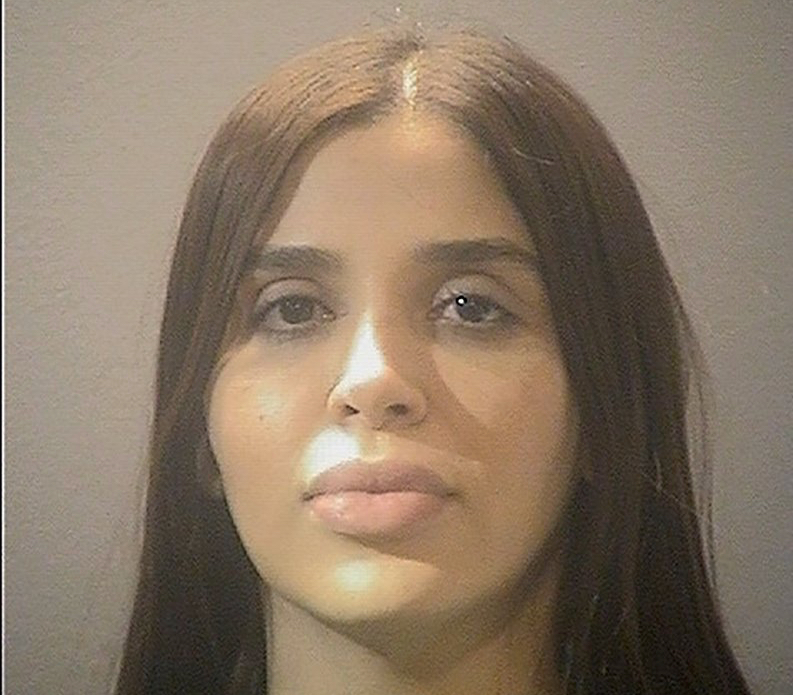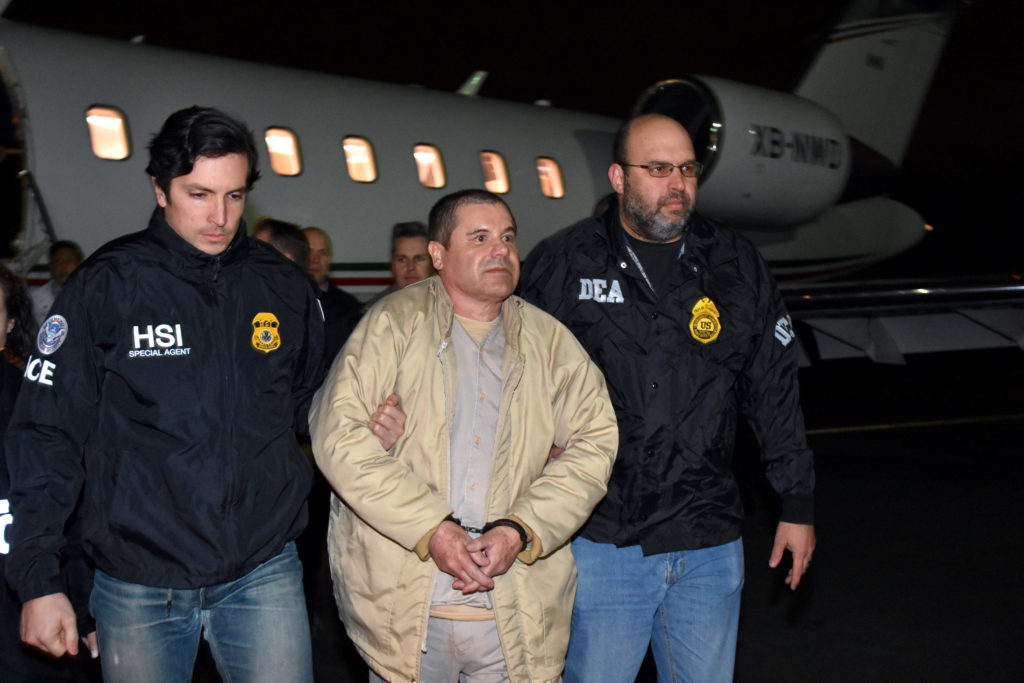El Chapo’s wife arrested in U.S., faces federal charges
Emma Coronel Aispuro is accused of drug trafficking, aiding cartel boss’s escape from Mexican prison

Emma Coronel Aispuro may not be a household name, but the U.S. Justice Department believes she was a key accomplice of the most notorious international drug trafficker of the 21st century: Joaquin “El Chapo” Guzman.
She also is his wife.
Coronel Aispuro, 31, was arrested Monday, February 22, at Dulles International Airport near Washington, D.C. The following day, a judge ordered her held without bond after prosecutors argued that she is a flight risk.
The former teenage beauty queen is charged with conspiracy to distribute cocaine, methamphetamine, heroin and marijuana in the United States. She faces 10 years to life in prison and a fine of up to $10 million.
Officials did not reveal how they knew Coronel Aispuro was traveling to the United States, but it appears she was oblivious to the fact that she faced the possibility of being arrested.

Prosecutors allege that Coronel Aispuro helped her husband, then boss of the Sinaloa Cartel, to escape from Mexico’s Altiplano federal prison in 2015. Guzman escaped by exiting his cell through a hole beneath the shower and descending into a lighted tunnel that ran almost a mile away from the prison. Court papers contend that Coronel Aispuro worked alongside Guzman’s sons, Ivan, Alfredo, Ovidio and Joaquin, and another person, who is now a government witness, to build the tunnel and execute the escape.
Coronel Aispuro was a familiar presence at Guzman’s 2018-2019 trial in Brooklyn, New York. She attracted paparazzi outside the courthouse with her stylish attire and frequently waved and blew kisses to the defendant during the proceedings. She claimed to know nothing about the Sinaloa Cartel, suggesting Guzman was the humble owner of an irrigation company.
The jury did not agree with Coronel Aispuro’s depiction of her husband. He was convicted and sentenced to life in prison plus 30 years. Guzman, 63, will spend the rest of his life in the federal “supermax” prison in Florence, Colorado.
Coronel Aispuro has dual citizenship. She was born in Santa Clara, California, when her mother was visiting relatives, but she grew up in rural Mexico. She met Guzman when she was 17 years old. They married when she turned 18 and had twin daughters in 2007.
Her claims of ignorance of the Sinaloa Cartel are not convincing to investigators because her father, Ines Coronel Barreras, was a cartel member (he is now in prison), and her brother was involved as well.
“Coronel grew up with knowledge of the narcotics trafficking industry,” FBI special agent Eric S. McGuire states in an affidavit supporting the criminal complaint. “Based on my investigation, I know Coronel understood the scope of the Sinaloa Cartel’s drug trafficking. She knows and understands the Sinaloa Cartel is the most prolific cartel in Mexico.”
Beyond her familiarity with the cartel’s activities, investigators believe she was an active participant, relaying messages regarding drug trafficking matters from the imprisoned Guzman to his lieutenants.

She also was heavily involved with her husband’s prison escape, according to government witnesses cited in the affidavit. Coronel, along with El Chapo’s sons and others, “agreed to organize the construction of an underground tunnel linked to Altiplano in order to facilitate Guzman’s escape from prison.” The plot involved purchasing a piece of land near the prison, where a structure was built to disguise the tunneling work. The plan also included delivering a GPS watch to Guzman in prison “in order to pinpoint his exact whereabouts so as to construct the tunnel with an entry point accessible to him.”
After Guzman was recaptured in 2016 and returned to Altiplano prison, he met with Coronel Aispuro and again discussed escape plans. But then Guzman was transferred to a prison in Ciudad Juarez, According to the affidavit, Coronel Aispuro told the government witness that “approximately $2 million had been paid to the Mexican official who oversaw the Mexican prisons to facilitate the transfer” back to Altiplano. However, the transfer did not happen, and Guzman was extradited to the United States on January 19, 2017.
In the affidavit, McGuire describes his extensive investigations of the Sinaloa Cartel. “I have debriefed more than one hundred members, former members, and associates of the Sinaloa Cartel, including but not limited to a high-ranking associate of Guzman,” McGuire states, referring to the cooperating witness.
McGuire states that Guzman and Ismael Zambada Garcia, known as “El Mayo,” “were the co-leaders of the Sinaloa Cartel from 1989 to 2016.” He says they “controlled drug trafficking routes from South America to the United States, importing tons of cocaine, heroin, methamphetamine, and marijuana,” and they “created an umbrella of security and corruption that permitted other drug traffickers to operate throughout Mexico.”
El Mayo remains at large, and is believed to be hiding out in the mountains of Sinaloa.
Feedback or questions? Email blog@themobmuseum.org





